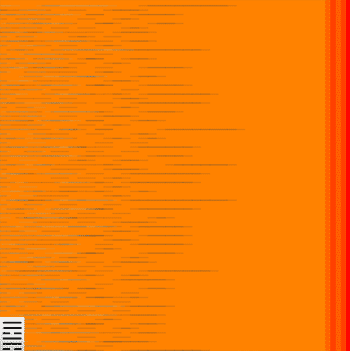![]() >> Sonja's Latest work Interactive work Flash Design Arranged by Medium A tour via thumbnail images
>> Sonja's Latest work Interactive work Flash Design Arranged by Medium A tour via thumbnail images
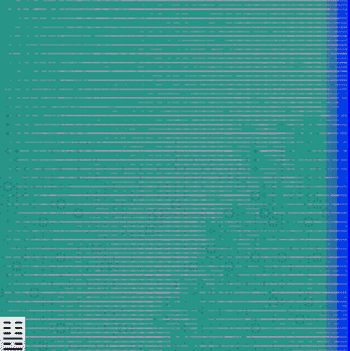
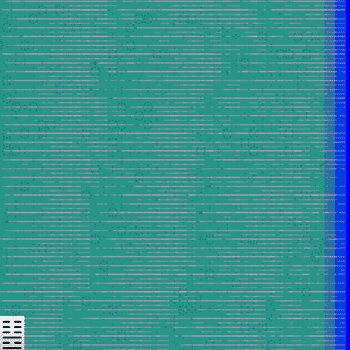
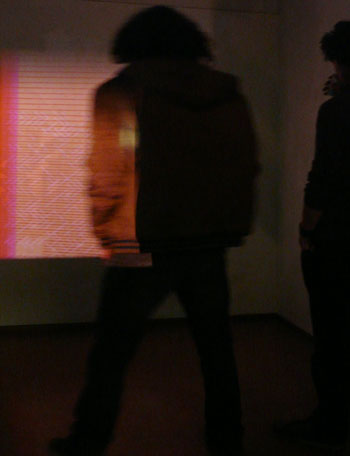

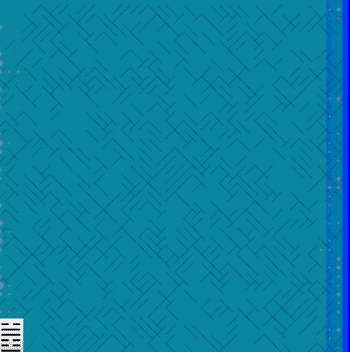
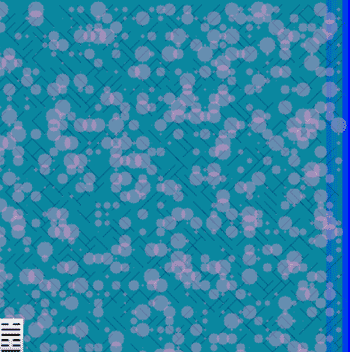
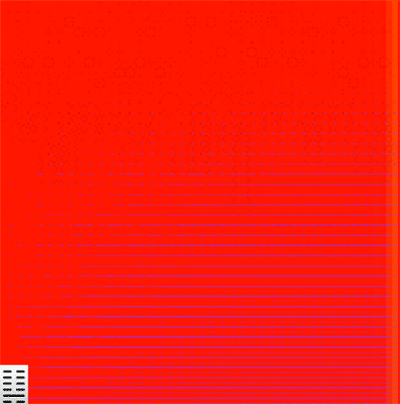

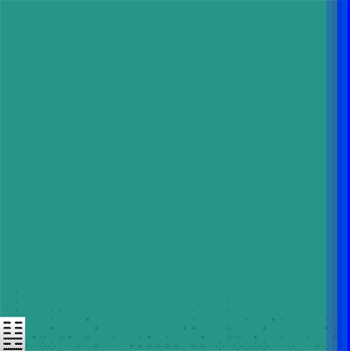
The short (yin) and long (yang) lines show
the hexagram after clicking 6 times.
Here you see that the clicks resulted in a yang, yin, yang, yin, yin, yin hexagram.
This is an interactive oracle or fortune teller. After reflecting on a question or problem, the participant is instructed to click 6 times to find their answer in the colour field, subtle animations, and sounds.
The system is based on the I Ching, also known as 'the book of changes', an ancient Chinese philosophical text, and interactive oracle.
Each of the 6 clicks affects the database of possible colours, animations and sounds in the same way a coin or stick would determine a yin or yang change.
This image-changing-image continually and gradually mutates, affected by the never-ending tiny animations of short and long lines over them.
For some this was like playing a game. Others used seriously as a means for meditation or problem solving, and others read the result as an aesthetic experience.
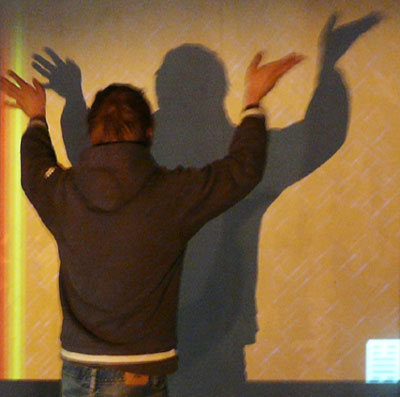
We made this artwork during the 2 month Making Art of Databases research group at the
Department of Image and Sound, at the Hague Conservatory in The Netherlands and decided to use
The I Ching system as our 'database' for our art project.
The I Ching (Yijing) system relies on a succession of random events in combination with chosen actions (throwing coins or sticks), where the
end result is a hexagram (6 lines) which corresponds to a text in the book I Ching. So it is a database with 64 possibilities created out of a binary (heads or tails) system where each throw is either yin (shown as a broken line) or a yang (shown as an unbroken line). The individual's involvement with this system is the belief that they are having an effect on the end result when they throw the coin or stick.
We chose the I Ching as a starting point for our project because we were interested in the paradox of chance and choice and we focused on the principles of the I Ching as an answer that is an aesthetic experience rather than imitating the I Ching traditions or prophecy. Although our system is based on the same binary chance system, the speed at which the participant makes the clicks with the mouse has an affect on the final result.
After reflecting on a question or problem, the instruction is to click 6 times for the answer. With each click there are 6 visible
changes of colour. The colour lines on the right show the colour of each level of 'change.' After the third click an animation starts as does a sound. Each animation and sound relates to the symbolism of that particular trigram (the I Ching term for each set of three 'results').
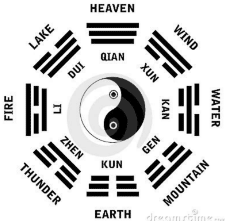
The illustration is from:
http://taoistiching.org
So in the three illustrations below and right, the first triagram is the mountain (— -- --) and the second triagram (the top three lines) is the lake (— — --) triagram. The corresponding soundscape for this particular hexagram is a soundscape where the only distinctive sounds are that of bubbling water.
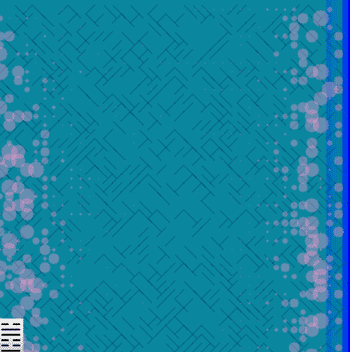
The same result as on the right, after 5 minutes.
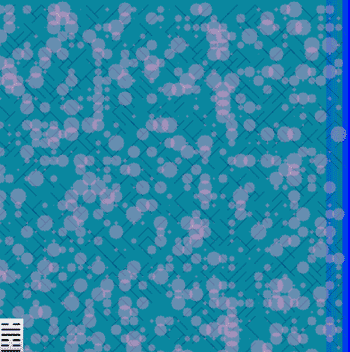
The same as above after 15 minutes after the 6th click.
Changes are simple and continuous, reflecting the main principle of the I Ching: that change is like each ripple on the water made by a stone being thrown into a lake. The fields of colour seem to continually and gradually mutate, affected by the never-ending tiny animations of short and long lines over them.
Another principle of the I Ching is that the first ripple has the largest impact on the final result and as you see in the examples, the first colour choice yin (red) or yang (blue) affects all the successive fields of colour. In the examples below there are more yang (towards blue) then yin (towards red) changes but the dominant colour is from the yin because it was the first result. The colours were chosen in response to how each of these were described in the I Ching, such as the first yang (a bright blue in our system) being Heaven, strength, firmness, life, innate knowledge, primal unified energy.
